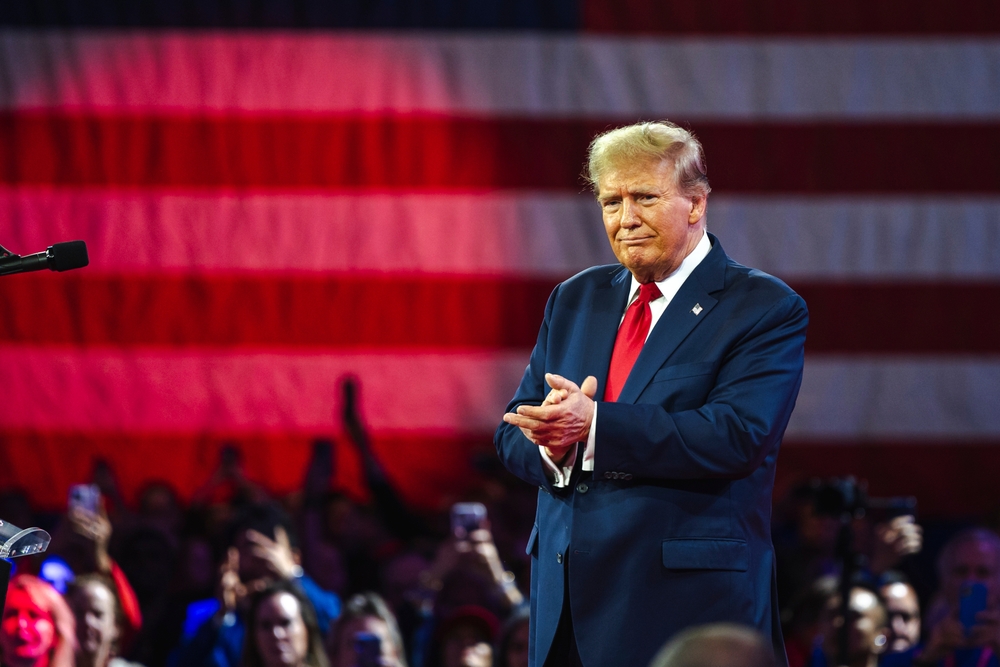The ongoing trade dispute between the United States and China escalated as U.S. President Donald Trump threatened to impose a new 50% tariff on Chinese goods. The threat comes in response to China’s 34% counter-tariff, which was introduced shortly after the U.S. launched its own wave of import taxes under a broader global trade initiative.
Tariff Tensions Reach a Boiling Point
Trump’s recent move builds upon a series of tariff actions taken earlier, including a 20% rate introduced in a previous round and a 34% hike as part of what he called “Liberation Day,” which aimed to place a minimum 10% tariff on nearly all trading partners. If enacted, the newly proposed 50% tariff on Chinese imports would raise the total tax burden to 104% on goods coming from China, marking an unprecedented level of trade penalties between the two nations.
The U.S. administration has given China a deadline to reverse its retaliatory tariffs. Failure to comply could result in immediate enforcement of the new 50% levy. The pressure tactic has drawn strong condemnation from Beijing, which dismissed the move as both unreasonable and harmful to international trade relations.
Global Markets React to Uncertainty
Markets across the globe have been highly sensitive to the news, with volatility spreading from Asia to Europe and North America. Asian markets were hit particularly hard, with some indexes experiencing their steepest single-day drops in decades. Hong Kong’s Hang Seng index suffered a double-digit percentage fall, while Taiwan and Singapore also recorded significant losses. Other regional markets like Thailand and Indonesia opened to declines after national holidays, further fueling concerns of regional instability.
European markets did not escape the fallout, with major indices including London’s FTSE 100 closing deep in the red. In the United States, the initial market reaction was sharply negative as investors responded to uncertainty around international trade policies. Although some losses were later recovered, the overall sentiment remains cautious.
The global sell-off reflects deep concerns over the possibility of an extended and intensified trade war between the world’s two largest economies. A prolonged standoff could affect not only bilateral relations but also global supply chains and the broader economic outlook.
Industry Impact and Economic Consequences
For China, the potential tariffs pose a serious threat to key industries that rely heavily on the U.S. as an export destination. Among the products most at risk are electrical goods, computers, furniture, toys, vehicles, and various forms of industrial equipment. The ripple effects are expected to reach Chinese manufacturers across multiple sectors.
In contrast, American exports to China, which include oilseeds, grains, aircraft, pharmaceuticals, and machinery, may also face further retaliatory measures. U.S. businesses involved in international trade could encounter higher costs, disrupted supply lines, and reduced competitiveness in overseas markets.
While the administration in Washington insists that the tariffs are designed to create fairer trade conditions, businesses and economists warn that such aggressive measures could result in lasting economic damage. The fear of increased costs for American consumers and disruptions to global commerce has amplified pressure on both governments to seek a resolution.
Shifting Alliances and Ongoing Negotiations
As the situation develops, the U.S. is actively engaging with other global partners on trade matters. Countries have begun responding to the broader tariff strategy introduced under the U.S. policy shift. Several governments have signaled their willingness to negotiate new deals, while also expressing readiness to take countermeasures if necessary.
Talks with certain countries have already begun or are scheduled to begin soon, focusing on reducing trade imbalances and dismantling barriers. One country has pledged to address its trade surplus with the United States rapidly, while another is preparing to send a dedicated team to negotiate tariff arrangements. There has also been an offer for a reciprocal tariff elimination deal from a major trading bloc, although it came with a warning that protective steps may still be taken if needed.
Despite the growing backlash, the U.S. leadership maintains that its trade strategy is aimed at securing long-term benefits. Officials argue that tariffs are a necessary tool to achieve more balanced and equitable global trade. However, with tensions rising and no immediate solution in sight, the risk of further escalation remains high.



